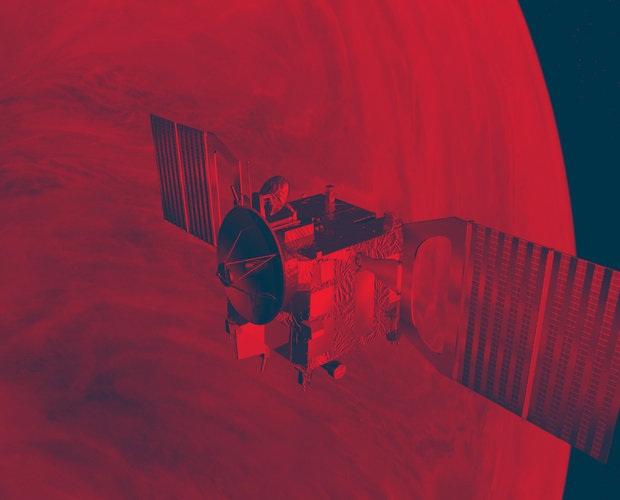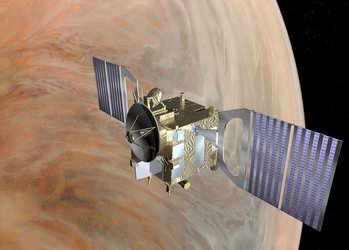Venus Express gets wings
Both solar array ‘wings’ have been installed on ESA’s Venus Express spacecraft, and preparations at the launch site in Baikonur are proceeding according to schedule, says Launch Campaign Manager Michael Witting.
The installation of the first solar array started on 12 September. The wing was connected mechanically and electrically to the main body of the spacecraft by a specialist team from Astrium GmbH (Munich).
The deployment of the wing was then tested, supported by a special rig (see movie). The lightweight wing is designed to be strong enough to support itself in space but on the ground, if not held up, it would collapse under Earth’s gravity.

With the wing deployed, the specialist teams from Austrian Aerospace and Alcatel Alenia Space Italia could continue installing the thermal Multi-layer Insulation (MLI, the reflective ‘skin’ of the spacecraft) on the main body.
A final test was then made using lamps to illuminate the wing and to verify that all electrical connections to the spacecraft on-board power system were correct.
The wing was stowed and test-released again for its very final deployment on the ground, which was completed flawlessly. The next time it deploys, shortly after launch in October, it will be in space.

After the wing was stowed in its final position for launch, this sequence of activities was repeated for the installation of the second solar array on the other side of the spacecraft. This was completed without any problems on 15 September.
Launch Campaign Manager Michael Witting said: "Teams are working long hours, 12 hours and often more using multiple shifts every day from Monday until Saturday, but we’ve been very pleased with the installation of the solar array wings. Work has also progressed in the preparation of procedures for the final countdown and for the last four days before launch during which the spacecraft will be sitting on the launch pad.
"The final countdown sequence of about nine hours was practiced with the complete ‘bunker team’ in place (the team that will be in the underground bunker 150 metres from the pad during launch)."















 Germany
Germany
 Austria
Austria
 Belgium
Belgium
 Denmark
Denmark
 Spain
Spain
 Estonia
Estonia
 Finland
Finland
 France
France
 Greece
Greece
 Hungary
Hungary
 Ireland
Ireland
 Italy
Italy
 Luxembourg
Luxembourg
 Norway
Norway
 The Netherlands
The Netherlands
 Poland
Poland
 Portugal
Portugal
 Czechia
Czechia
 Romania
Romania
 United Kingdom
United Kingdom
 Slovenia
Slovenia
 Sweden
Sweden
 Switzerland
Switzerland





























